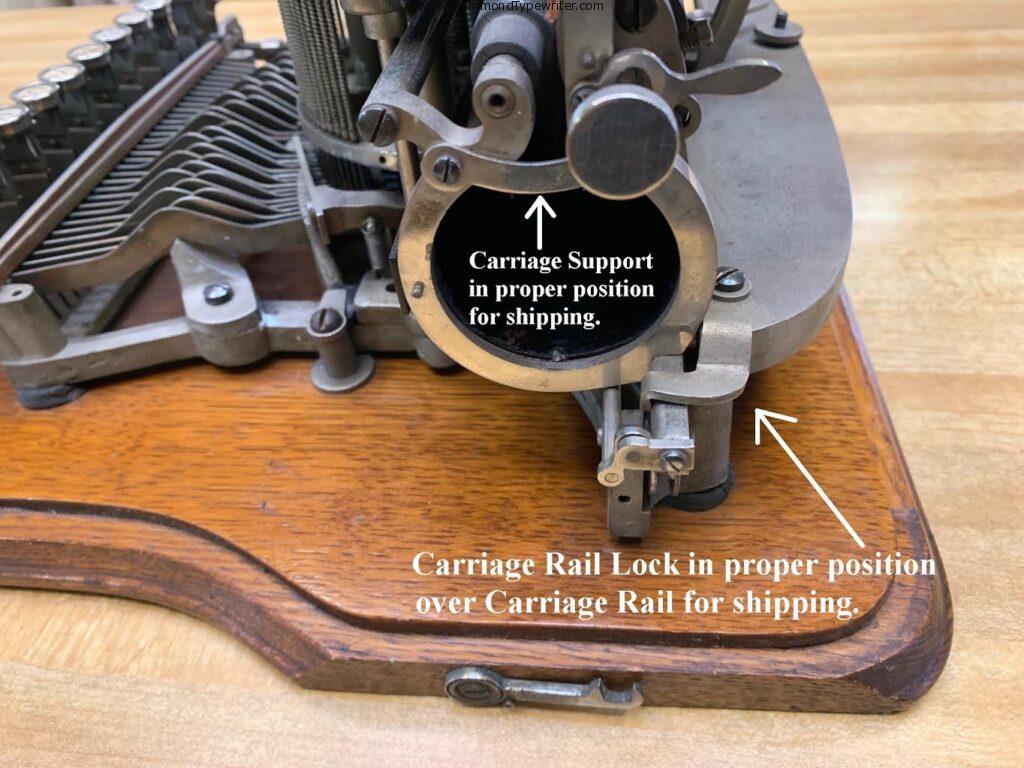The Hammond typewriter travels well but only with the right packing. Originally they were shipped in wooden crates, bolted down, and occasionally filled with paper or hay. This was because then, and especially now, the carriage was especially prone to breakage, even when handling.
What follows are some instructions for how best to secure and pack a Hammond typewriter for shipment.
Shipping
Consider FedEx or the US Postal Service. ALWAYS get insurance, recommended at least $500.
DO NOT USE UPS. UPS does not allow you to call and speak to an actual person, so if something goes wrong then you are on your own because the physical store cannot help you. They try very hard to avoid paying for damage.
If you are asked later you are to say that the machine was a gift, it was not sold, and you have no receipts. If you sell a typewriter and it is damaged by UPS, they will consider it a lesser value because it was sold retail. Thus regardless of the insurer, they are not to know if you sold the machine or were paid anything for it.
Packaging
1. At least two boxes one larger than the other – Double boxing is absolutely a must.
2. Packing Peanuts
3. Plastic wrap
4. Bubble wrap
5. Pool noodles, optional
The Paper Rack/Rest
The paper rack, or rest as it’s commonly referred to, should be folded down. Then the carriage must be secured in place using its carriage locks. This is done by loosening a screw for the carriage locks, located on the back of the machine,, swinging them out and in to place, and then screwing them back down.

Sometimes the carriage will not move, that’s ok, do not force it. If you can center the carriage that would be most desirable, but if the carriage is frozen in place, leave it that way.
This is where plastic wrap comes in. If you cannot secure the carriage, please securely wrap the machine generously in plastic wrap so that nothing moves. While it is suggested to do this always, it’s especially critical when the carriage cannot be locked.

Next you’ll want to position the carriage support arms. These requiring loosening a small screw, swing the flat piece of metal it across the gap of the carriage opening, and then screwing it back down. The carriage support generally has a small hole in the end that fits over a post.
With the carriage locks in place, carriage support arms in place, it is strongly recommended that you use copious plastic wrap to wrap the machine securely. This will prevent the carriage from inadvertently moving in transit, potentially puncturing the fragile lid.
Speaking of the lid.. If the machine you are shipping has a lid, there’s two options. If you are worried about its condition, you should send it separately. If it looks sturdy, you can ship it covering the machine. After the lid is in place, secure it over the machine with the lid locks.
On either side are two small locking arms which swing over pegs on the sides of the lid. Some machines have a rotating catch on the lid itself, so that when the base hooks latch, you can turn the small knob to secure it in place from moving.
Now the machine is secured inside of its lid. Now use more plastic wrap to secure the lid in place on the machine, just in case. Now the machine is ready for boxing. Generally we will put the machine in a box that is slightly larger than the machine, filling the void with peanuts.
Then then box is sealed and given a good shake. You should not hear any rattling or movement of the machine. Next, using a larger box than the first, place the smaller inside the larger, and line the space around with pool noodles, peanuts, and bubble wrap. Be sure you put packing materials on the bottom of the box, and then on top before closing and sealing the box.
If you want to be extra careful, fold up a smaller box and place it on the sides, bottom, and another on top of the packing materials before sealing the box. Additionally, pool noodles cut to fit inside the larger box, are great for immobilizing the inner box.
Boxes are routinely thrown, dropped, kicked, and punctured in transit. The outer box will protect the inner box, and anything from puncturing and damaging the fragile lid or machine.